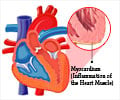New study states to fit their busy schedules, women with heart disease today need flexible options for lifestyle programs.

‘Cardiovascular disease is the leading cause of death in women worldwide; in 2015 it accounted for one-third of all female deaths.’





Cardiovascular disease is the leading cause of death in women worldwide; in 2015 it accounted for one-third of all female deaths. Following a cardiac event such as a heart attack, patients are advised to attend cardiac rehabilitation for exercise training, lifestyle education, smoking cessation, and psychological support. These programmes improve fitness, quality of life, mental health and survival, and reduce the risk of further events.However, approximately 10-20% fewer women than men participate in cardiac rehabilitation, and women are more likely to drop out (35% of women quit versus 29% of men). In contrast, women are high users of local exercise classes: many women attend at least 70% of the sessions on offer.
"What lessons can we learn from these community physical activity programmes to increase women's uptake of cardiac rehabilitation? This important question formed the basis of our review," said first author and PhD student Ms. Sol Vidal-Almela of the University of Ottawa Heart Institute.
The authors reviewed a decade of literature to identify what stops women with heart disease from attending cardiac rehabilitation, and the characteristics of local exercise programmes (not specifically targeting people with heart disease) that could overcome those hurdles.
Multiple barriers to participation were identified. Some women view cardiac rehabilitation as a "men's club". Classes are at set times and incompatible with women's daily schedules. Women do not enjoy the physical activity offered and it does not fit their needs: some find it too physically demanding, while others want it to be more challenging. Women frequently lack social support and feel guilty for deserting their family. Classes are often at hospitals far from home; women without a car and poor access to public transportation do not want to inconvenience others to drive them.
Advertisement
Provide flexible class times that are compatible with women's busy schedules. For example, offer daily exercise sessions and encourage women to attend two to three times a week, or modify the activity depending on the weather (e.g. outdoor walking or indoor DVD dancing). Hold classes closer to participants' home, workplace or faith-based institution. Promote social interactions through group activities (e.g. healthy recipe preparation) and allow partners, friends and family members to join in.
Advertisement
Dr. Reed said: "Women's high participation in group exercise classes in their neighbourhood suggests that they enjoy the sense of community. Multi-site cardiac rehabilitation programmes can help to resolve transportation issues and bring a sense of belonging."
She added: "We are more likely to make time for activities we enjoy and consider important. Dance seems a particularly appealing option for women, who find it fun, enjoyable and motivating. With some creativity, we can modernise cardiac rehabilitation to be more appealing and relevant to women."
Dr. Reed concluded: "Women have been underrepresented in cardiovascular research. The assumption that findings from studies predominantly including males will be generalisable to females represents a barrier to the advancement of cardiac rehabilitation to meet the needs of women and men."
Source-Eurekalert












